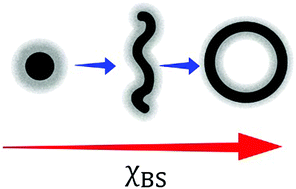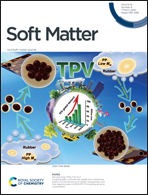Design principles for metamorphic block copolymer assemblies
Abstract
Certain block copolymer assemblies in selective solvents undergo dynamic morphology transitions (metamorphism) on varying the solution temperature. Despite the great application potential, there is a lack of fundamental understanding of the relationship between copolymer composition and the thermally-induced metamorphic behavior. Herein this relationship is studied by applying Scheutjens-Fleer Self-Consistent Field (SF-SCF) theory to develop fundamental design principles for thermoresponsive diblock copolymers exhibiting metamorphic behavior. It is found that metamorphism is caused by variation in the degree of stretching of the lyophobic blocks in response to changes in solvency. An optimal lyophobic/lyophilic block length ratio interval 3.5 ≲ fB ≲ 5.5 is identified. Such a fB window allows switching between spheres, cylinders and vesicles as preferred morphologies, with relatively small changes in the lyophobic block solvency. The transition from spheres to cylinders and from cylinders to bilayers can be controlled by varying fB, the overall degree of polymerization of the diblock copolymer, and by choosing an appropriate lyophilic block. Empirical relationships are provided to establish a connection between the SCF–SCF predictions and experimental observations.



 Please wait while we load your content...
Please wait while we load your content...